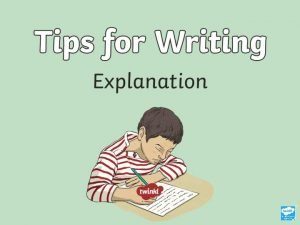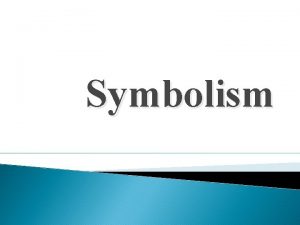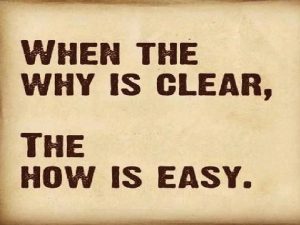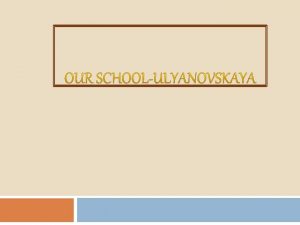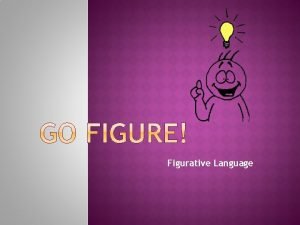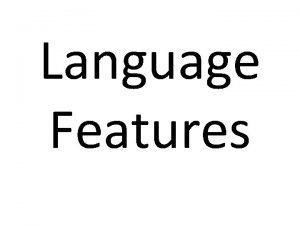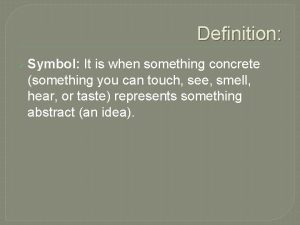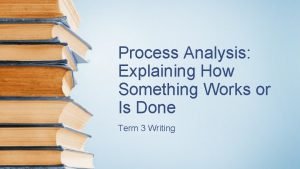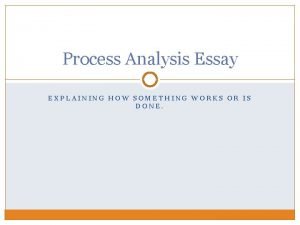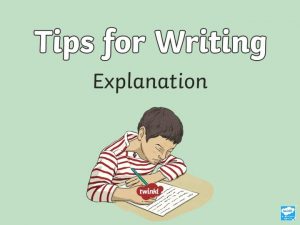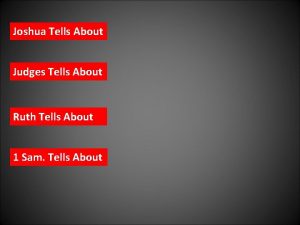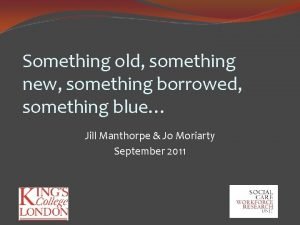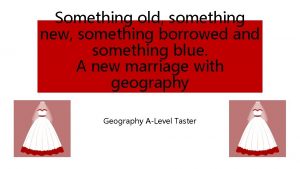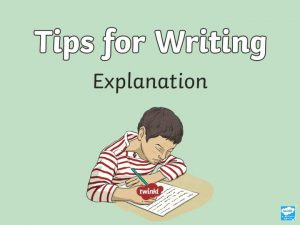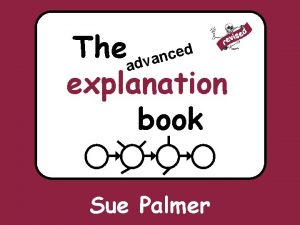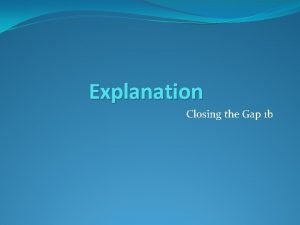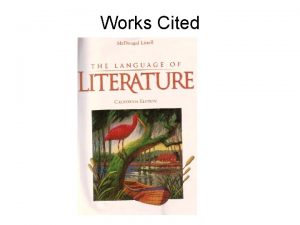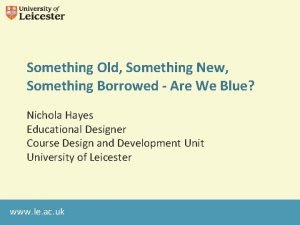Explanation Purpose Tells us how something works or










- Slides: 10


Explanation Purpose Tells us how something works or gives us information about something.

Structure A general statement is used to introduce the topic of explanation. There are lots of things we can do to stay healthy and to keep illnesses away. A series of logical steps explaining how or why something occurs. The best drinks for staying healthy are water and milk. Fruit juices can be good for us but they can have a lot of sugar in them. Fizzy drinks are not good for us at all. Steps continue until the final state is produced or the explanation is complete.

Features Explanations are written in the present tense. Many birds fly south Conjunctions that signal time are used in explanations. then next several months later Explanations are written using causal connectives. because so this causes

Features • Title – explains what the text is for • Opening Statement – about the subject • Clear, simple points about why or how something occurs • Technical words – where appropriate • Conjunctions – e. g. because, resulting in • Present tense • Summary Paragraph

Use a clear title that indicates what you are writing about. Use the first paragraph to introduce the subject to the reader. Decide whether to use diagrams, charts, illustrations or flow charts to help explain. Title and Introduction Using how or why in a title helps. Try to make the title intrigue the reader. Why do sloths hang about?

Organise the writing and illustrations to explain: • What you need. • How it works. • Why it works. • When and where it works. • What it is used for. • Add in extra, interesting information.

Interest the reader with an exclamation or question. Beware – whirlwinds can kill! Did you know. . . ? Interest the reader. Strange as it may seem…, Not many people know that…

Reread the explanation pretending that you know nothing about the subject. Does it make sense? Finish by drawing all ideas together in a concluding paragraph. Ending If specialised terminology is used, a glossary may be needed. Relate the ending to the reader.

 It tells how something works or why something happens
It tells how something works or why something happens Symbolism is the use of concrete things to represent
Symbolism is the use of concrete things to represent Symbol/symbolism definition
Symbol/symbolism definition Smart is not something you are
Smart is not something you are Something old something new poem
Something old something new poem Describing something by comparing it to something else
Describing something by comparing it to something else Something that describes something
Something that describes something Theme vs topic
Theme vs topic How something works
How something works How something works
How something works Safety at streetworks
Safety at streetworks
